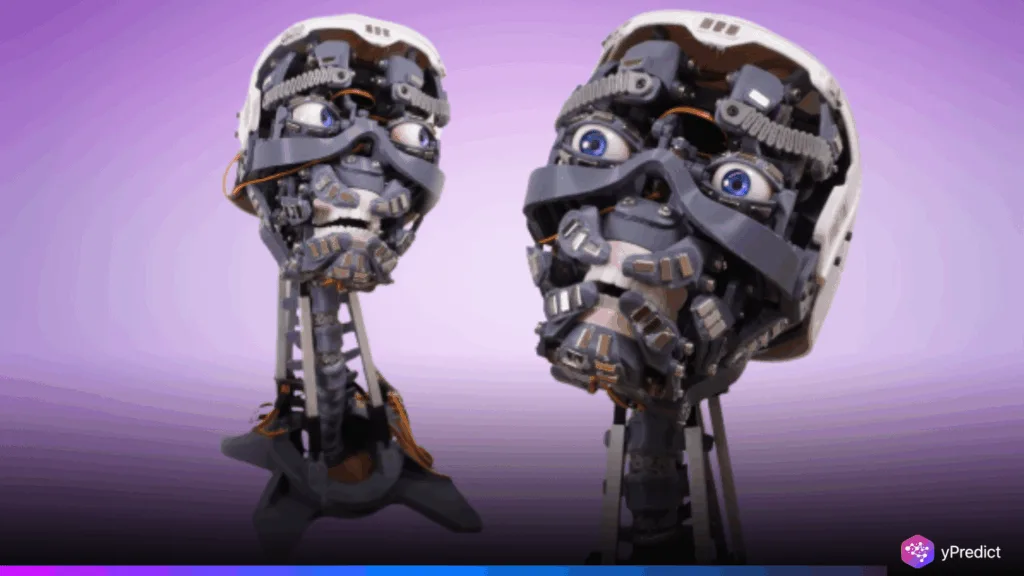
Mechatronics expert Will Cogley, a YouTuber with more than 137,000 subscribers, is building a very realistic robot head. It appears to be taken directly from a science fiction film. His 3D-printed model creates realistic facial expressions that blink and emote. It even synchronizes lips with speech using human anatomy as a guide.
Precision engineering is demonstrated by this robot head, which is powered by 14 servo motors and an advanced neck platform. Additionally, it showcases innovation and open-source elements. Although not yet AI-powered, it may soon be able to work with chatbots to transform the way humans interact with machines.
Inside Cogley’s Hyper-Realistic Robot Powered By Servos
Cogley’s robotic head blends artistic detail with engineering prowess. Using servos to move its jaw, raise its eyebrows, and articulate its tongue, it has a remarkably human appearance. X viewers have responded with varying degrees of fascination and unease. Mario Nawfal described it as “as cool as it is creepy” in a post that went viral. It stands out among modern robotics just for its visual impact.
Additionally, the head’s design incorporates a robotic neck that draws inspiration from real vertebral motion and a Stewart platform. Six small linear actuators are used to simulate natural neck movement. This method initially resulted in jerky motion. However, Cogley fixed it by adding fluidity and realism with a flexible spine made of 3D-printed discs and vertebrae.
One of the primary benefits of the project is its accessibility. Cogley draws interest from both engineers and enthusiasts by using inexpensive materials and being transparent about his processes. By doing this, he guarantees that the incredibly realistic robot head is a teaching tool for others as well as a high-tech marvel.
Is This Just the Beginning of Robot Evolution?
The innovation doesn’t stop at motion. 3D printing allows for customization in the construction of every mechanical component. Moreover, this aligns with broader advancements in humanoid robotics, where open-source designs are influencing the trajectory of progress. The Berkeley Humanoid Lite and other similar projects demonstrate the potential of this strategy.
There are hints of plans to integrate AI, even though the robot head is currently controlled by preset controls. Additionally, platforms such as ALANA already combine conversational AI with expressive bots. Cogley’s creation has huge potential for completely human-like interaction if it integrates with such technology.
Looking Ahead with Wonder
Cogley’s hyper-realistic robot is a bridge to the future, not just a cool device. This project hints at what personal robots may look like in the future with lifelike motion and realistic facial expressions. Additionally, the work’s affordability and open-source nature reduce the barrier to robotics innovation. The next version of this robot head may not only emote but also intelligently respond as AI and robotics merge.
Are we ready for machines that feel so real?






